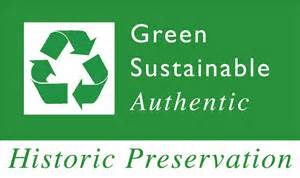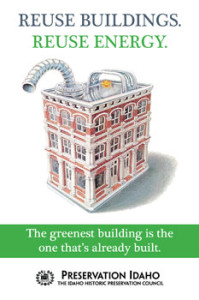
Welcome to the
Healy Project
Join us on Facebook
Send us an Email
Learn from the Past, Learn from the Present

On this day that celebrates Planet Earth, residents of our beautiful planet are urged to conserve dwindling resources by recycling everything from plastic bottles to buildings. The “Zero Waste” initiative of the City of Minneapolis similarly encourages citizens to conserve resources:
“Zero Heroes strive to have Zero Waste. They do this by working to first prevent waste, and then by recycling all they can of the waste that remains. To lower this amount of waste we need to take a step beyond recycling: waste prevention. Waste prevention is reducing the amount of waste and the toxicity of waste. Waste prevention saves natural resources, energy, and may even save you money.” City of Minneapolis Web Site

Minneapolis, the Zero Waste city, wants us to recycle and ride bikes–while the City sends hundreds of tons of historic house to the landfill.
However, while the City Solid Waste and Recycling Department is urging citizens to compost and recycle bottles and papers, the City Planning department has been facilitating the demolition of an historic house–which will send 180+ tons of materials to the landfill. This disconnect between saying and doing shows a gobsmacking hypocrisy: Citizens recycle while the City cancels out their efforts by a thousandfold in the demolition of one house.
“The facts are in – no matter how much green technology is employed, any new building represents a new impact on the environment.It makes no sense for us to recycle newspapers, bottles, and cans while we’re throwing away entire buildings and neighborhoods.It’s fiscally irresponsible and entirely unsustainable.”Jerri Hollan, FAIA
“Zero Waste” makes zero sense when the City shows blatant contempt for the most important piece of sustainability–recycling existing buildings. City Planning sent staffer John Smoley to the HPC twice to argue for its “save only the best buildings in the best neighborhoods” policy–and twice, after vigorous debate, the HPC affirmed that that the Orth House, 2320 Colfax Ave. S. is historic and should be placed under interim protection while a designation study is completed. But when the owner’s appeal to demolish was heard before the City Zoning and Planning, CM Lisa Bender, taking the unsupported testimony of the appellants as fact, declared that no viable alternatives existed to wrecking the house, and made a motion to overturn the HPC’s decision. The motion passed with no debate.
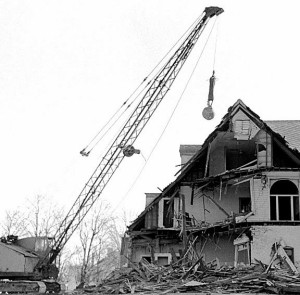
What the City plans for the Orth House and others in the Wedge and other not-good-enough neighborhoods.
“By 2030, we will have demolished and replaced nearly 1/3 of our current building stock, creating enough debris to fill 2,500 NFL stadiums. How much energy does this represent? [E]nough to power California (the 10th largest economy in the world) for 10 years. By contrast, if we rehabilitate just 10% of these buildings, we could power New York for over a year.”UrbDeZine SanFrancisco
The hypocrisy of the City regarding recycling would be laughable if it weren’t so appalling. Minneapolis needs to start practicing what it preaches. Citizens recycling cans and bottles is wasted effort if the government is not encouraging the recycling of buildings.
Don’t jive us, City of Minneapolis. Be a Zero Hero and affirm your alleged commitment to Zero Waste. Allow the historic Orth House to be recycled. The Greenest Building is the one standing.
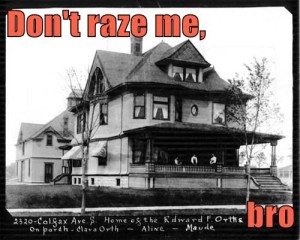
Answer: The one standing.
So says Carl Elephante, Director of Sustainable Design at Quinn Evans Architects. Last year, the National Trust for Historic Preservation released a study, “The Greenest Building: Quantifying the Environmental Value of Building Reuse,” with data that supports this contention. The report uses Life Cycle Analysis (LCA) to compare the relative impacts of building renovation and reuse versus new construction. The description of the study says that it “examines indicators within four environmental impact categories, including climate change, human health, ecosystem quality, and resource depletion.”
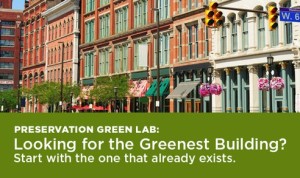 |
| copyright, National Trust for Historic Preservation |
According to the study, wrecking a building and replacing it with a new one comes with very high environmental and economic costs. Let’s look at what how these costs apply to the wrecking of the historic Orth House at 2320 Colfax Ave. S.in order to build the Lander Group’s new four-story apartment building:
First is the cost of destroying the existing structure. Wrecking the Orth House (and its neighbor at 2316) will cost the developer approximately $30,000 each. Add to this cost, the waste of the building materials of the house. The Orth House, a large 6,000+-square-foot house, is estimated to weigh 180 tons, not including the foundation (John Jepsen, Jepsen, Inc.). The Orth House was built in 1893 of lumber from Minnesota’s virgin forests. This irreplaceable resource will be hauled off to a landfill, never to be used again. The plaster, lath, windows, and mechanical systems will similarly be trashed. Yes, some of these features could be removed for salvage; however, the sad fact is that staircases, doors, and windows in a house of this size and vintage cannot easily be fitted into an existing structure. To reuse them, one would have to custom build a structure they could fit into. And what’s the point of that when they are already serving their purpose in the existing house?
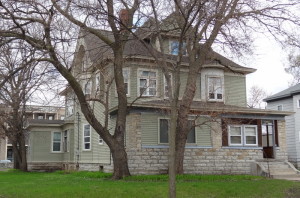 |
| The Orth House today. |
Second is the cost in labor and materials to build the new structure. New construction consumes many resources. The developer’s claim about energy savings makes no sense because new construction consumes so much energy upfront in producing new materials. (U.S.Green Building Council) The proposed apartment building is not one that uses a variety of “green” features and technologies, but a run-of-the mill structure. Recycling bins and bicycle racks do not a green building make. In fact, according to the Trust’s study, when replacing an average existing building with a new, more efficient building, it still requires as many as 80 years to overcome the impact of the construction.
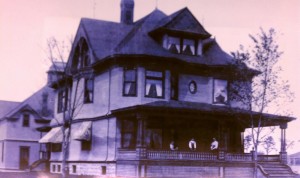 |
| The Orth House c. 1900 |

Recycling existing buildings is essential to creating sustainable cities.
Minneapolis, do the right thing: Support sustainability and save the historic Orth House from the landfill.
–T.B.
